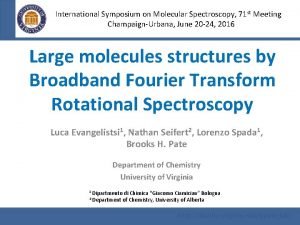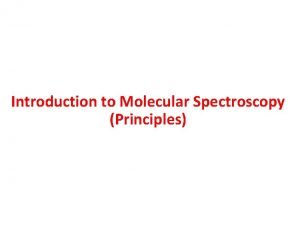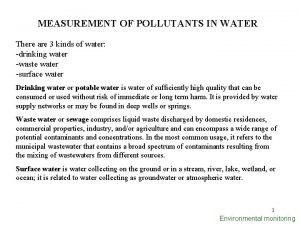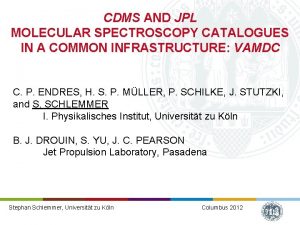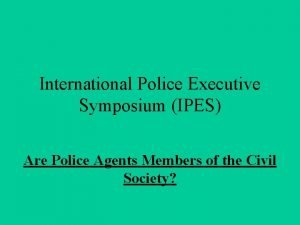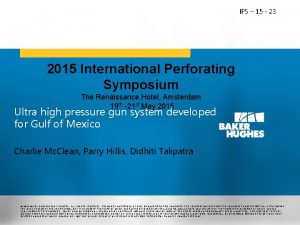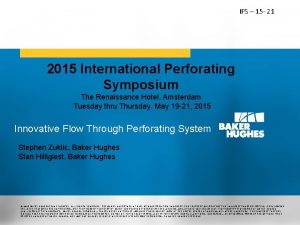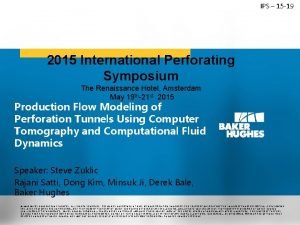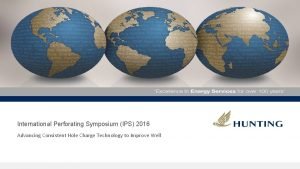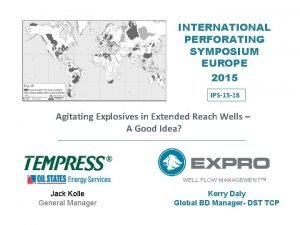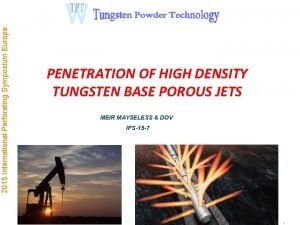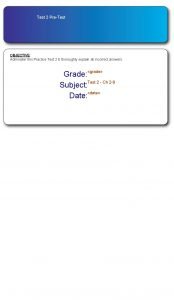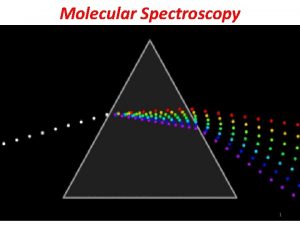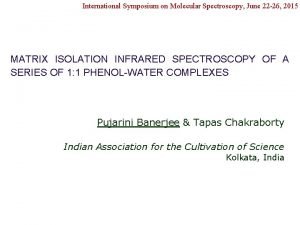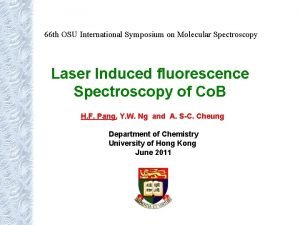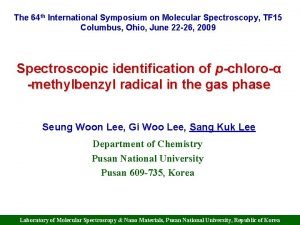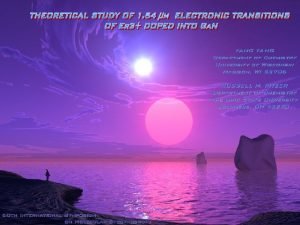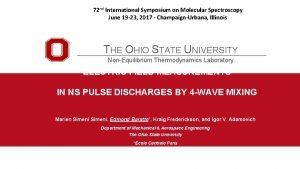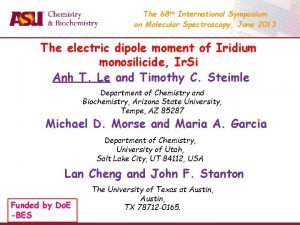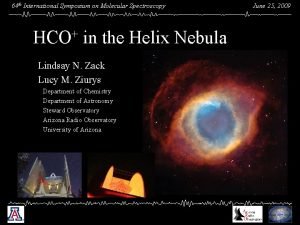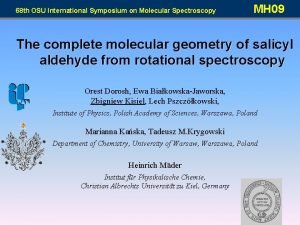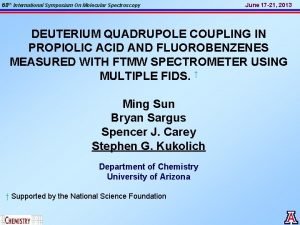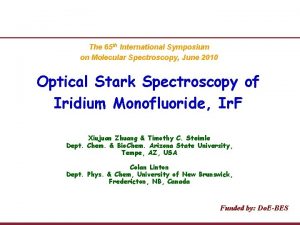62 th International Symposium on Molecular Spectroscopy Single















- Slides: 15

62 th International Symposium on Molecular Spectroscopy Single Quantum-state Resolved Collision Relaxation Cross Section of Highly Vibrationally Excited SO 2 in Supersonic Jet Measured by Kinetic Quantum Beat Spectroscopy Min Zhang, Jianqiang Ma Department of Chemistry, University of Pennsylvania Hai-Lung Dai Department of Chemistry, Temple University

Measurement of collision relaxation cross section σ =k/v High level density

Quantum Beat Spectroscopy Exp. Observation |1> k 1+ k 2 (eigenstate) |B> E 12 |2> |D> Ebd, Vbd = kb+ kd (zeroth order) fluorescence = 0+k*p

Bright levels coupled with highly vibrationally excited levels transition in supersonic jet condition

Observed quantum beat spectra:

Measurement of collisional decay rate constant of HVES = 0+k*p k 1+k 2 kb

Validity of calculation of supersonic jet condition x D: diameter of the nozzle;

Measured collision relaxation cross sections and coupling matrix elements of HVES Vib. Rot. Assign. (210) (140) (132) σ/Å2 Vbd/MHz Energy cm-1 Rovibronic symmetry Total A. M. 321 55(15) 14. 4(1. 0) 44865. 8 A 1 3 532 27(8) 8. 9(0. 7) 44875. 4 A 2 5 716 47(12) 10. 5(1. 3) 44877. 0 A 2 7 725 38(12) 8. 0(0. 7) 45043. 7 A 1 7 130, 13 50(24) 17. 6(0. 8) 45079. 6 A 1 13 1 59(8) 9. 4(1. 0) 45340. 9 A N/A 2 187(29) 15. 7(0. 7) 45344. 3 A N/A 3 35(15) 15. 4(0. 5) 45342. 5 A N/A 4 57(18) 29. 9(0. 1) 45343. 0 A N/A 5 66(6) 24. 9(0. 2) 45341. 8 A N/A 6 50(13) 11. 3(1. 3) 45329. 6 A N/A 7 187(29) 13. 9(0. 1) 45341. 4 A N/A 45343. 0 A N/A 8 63(7) 21. 4(0. 8)

Long range interaction in collision relaxation Hard sphere cross section Averaged experimental cross Section σ=48Å 48 2 σ=71Å 71 2 at 17 K Long and short range interaction Short range interaction decreases with Temperature; The long range interaction is very important in the collision relaxation of highly vibrationally excited molecules

Correlation between collision relaxation cross sections and vibronic coupling matrix elements (Vbd)

Vibronic coupling matrix element and : electronic wavefunctions and : vibrational wavefunctions q, Q: electron and nuclei coordinates

Collision relaxation cross section of HVESs |D> |B> |D’> t: time; b: collisional parameter; T: temperature; C(t, b, T): the function including the integrals of t, b and T;

Comparison of Vbd and collision relaxation cross section of highly vibrationally excited molecules

Conclusion 1. Single quantum-state resolved collision relaxation cross section 2. of highly vibrationally excited SO 2 is measured 3. by kinetic quantum beat spectroscopy 2. The large collision relaxation cross section at low collision energy indicates the substantial contribution from the Long Range Interaction.

Acknowledgments Dai Group National Science Foundation
 International symposium on molecular spectroscopy
International symposium on molecular spectroscopy Application of uv visible spectroscopy
Application of uv visible spectroscopy Difference between atomic and molecular spectroscopy
Difference between atomic and molecular spectroscopy Difference between atomic and molecular spectroscopy
Difference between atomic and molecular spectroscopy Upcdms
Upcdms International police executive symposium
International police executive symposium International perforating symposium
International perforating symposium International perforating symposium
International perforating symposium Ips perforating
Ips perforating Ips perforating
Ips perforating International perforating symposium
International perforating symposium International perforating symposium
International perforating symposium Covalent bond
Covalent bond Giant molecular structure vs simple molecular structure
Giant molecular structure vs simple molecular structure Giant molecular structure vs simple molecular structure
Giant molecular structure vs simple molecular structure The substance whose lewis structure
The substance whose lewis structure
